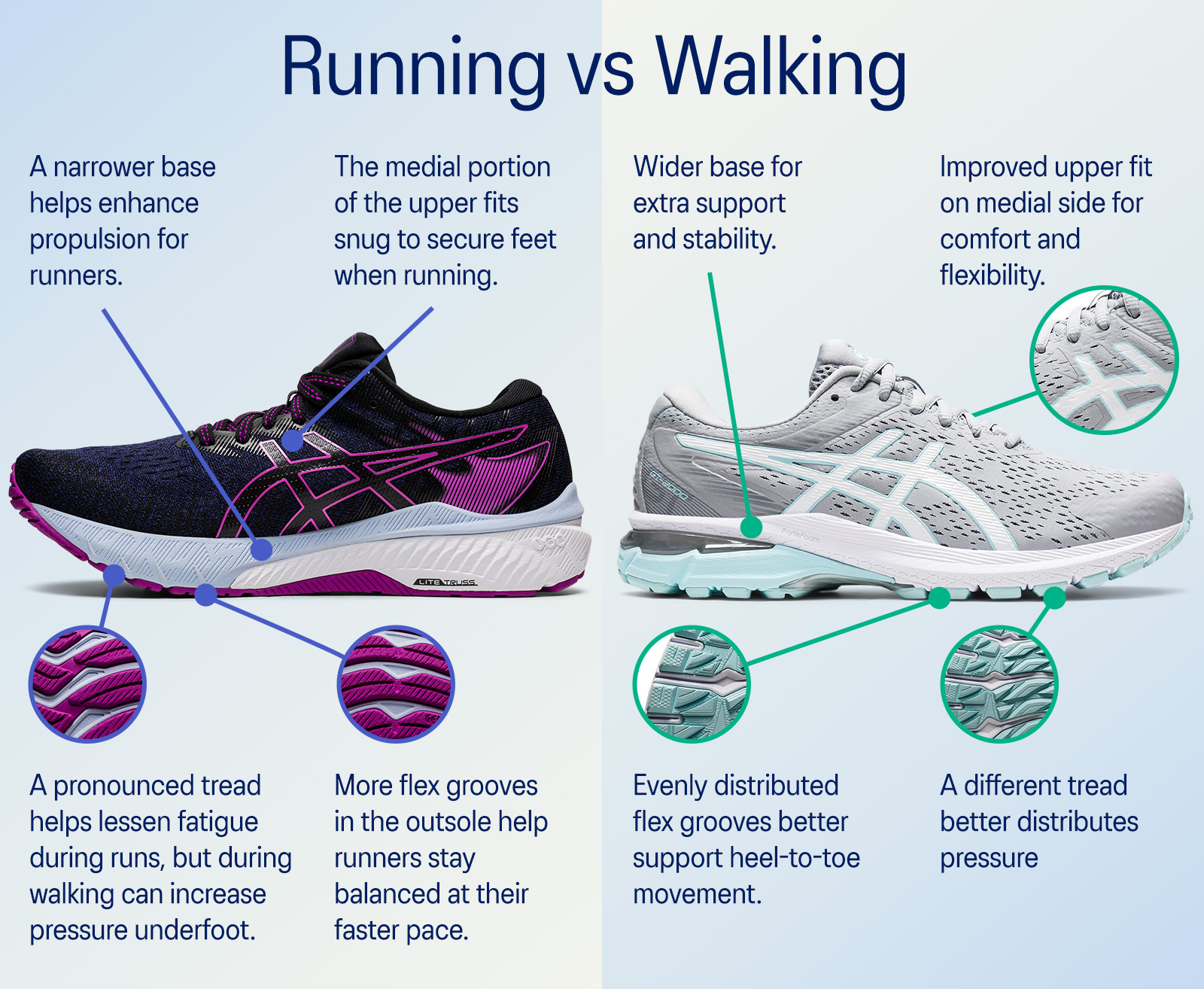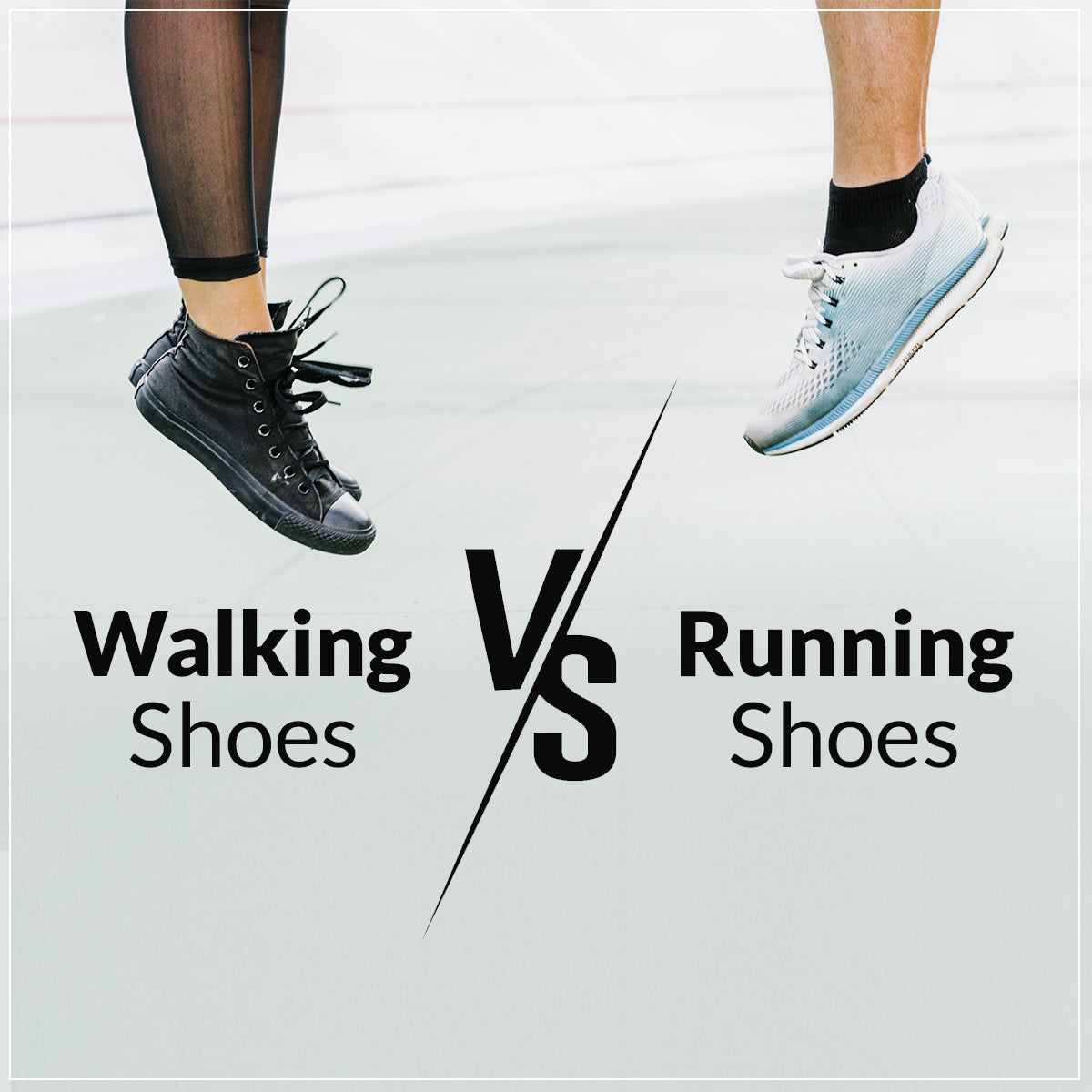Discover The Perfect Footwear For Your Fitness Journey: Running vs Walking Shoes
Embarking on a fitness journey demands the right gear, and nothing is more foundational than your choice of footwear. The debate between running vs walking shoes isn’t just about preference; it’s about aligning your shoes with your movement patterns to enhance performance and prevent injury. Whether you’re a seasoned athlete or a casual stroller, understanding the distinct engineering behind these shoes can transform your experience. Let’s dive into the specifics to guide you toward the perfect pair for your needs.
The Fundamental Differences in Design and Function
At first glance, running vs walking shoes might appear similar, but their designs cater to entirely different biomechanics. Running involves a gait cycle where the foot strikes the ground with greater force—often two to three times your body weight—and transitions quickly from heel to toe. To manage this impact, running shoes feature ample cushioning, particularly in the heel and forefoot, and incorporate technologies like gel or air pockets to absorb shock. The midsole is typically thicker and more resilient, designed to handle repetitive, high-intensity landings. In contrast, walking shoes support a smoother, rolling motion from heel to toe with less ground force. They prioritize flexibility to allow the foot to bend naturally with each step, and their soles are often curved to facilitate this rolling action. As noted by biomechanics experts from Harvard University, the wrong shoe type can alter gait patterns, leading to discomfort or overuse injuries. For instance, using stiff walking shoes for running might restrict the necessary foot flexion, while bulky running shoes for walking could feel cumbersome and impede natural stride. Thus, recognizing these design nuances is the first step in optimizing your footwear investment.

Biomechanics and Impact Absorption
Delving deeper into biomechanics reveals why running vs walking shoes are engineered differently. When you run, your foot typically lands with a midfoot or forefoot strike, generating significant vertical forces that travel up the legs and spine. Research from the American Council on Exercise highlights that running shoes incorporate advanced cushioning systems, such as ASICS’ GEL technology or Nike’s Air units, to dissipate this energy and reduce stress on joints. These features are crucial for preventing conditions like shin splints or stress fractures, especially on hard surfaces. Walking, however, involves a heel-to-toe motion with lower impact forces—usually around 1.5 times body weight—so shoes focus more on stability and smooth transitions. A study published in the Journal of Foot and Ankle Research emphasizes that walking shoes often have a beveled heel to encourage a natural roll and prevent jarring. For example, if you’re a walker using running shoes, the extra cushioning might feel comfortable initially, but it could lack the flexibility needed for efficient walking strides, potentially causing muscle fatigue. Conversely, runners in walking shoes might experience insufficient shock absorption, increasing injury risk. By aligning shoe features with your activity’s biomechanics, you not only enhance comfort but also safeguard your long-term joint health.

Key Features to Evaluate in Running and Walking Shoes
When comparing running vs walking shoes, several key features stand out as critical decision points. First, consider the sole flexibility: running shoes often have a stiffer sole to provide energy return during push-off, whereas walking shoes are more pliable to accommodate the continuous heel-to-toe motion. Brands like Brooks and New Balance use carbon rubber in running shoe outsoles for durability, while walking models might employ lighter materials for ease of movement. Second, look at the heel design—running shoes typically have a higher heel drop (8-12mm) to aid in forward propulsion and reduce Achilles strain, while walking shoes feature a lower drop (0-6mm) for a more natural foot position. Third, weight plays a role; running shoes are generally lighter to minimize fatigue over long distances, as highlighted in Runner’s World reviews, whereas walking shoes can be slightly heavier due to added support features. Additionally, consider the upper material: running shoes often use breathable mesh to manage heat and moisture during intense activity, while walking shoes might include more leather or synthetic overlays for structure. As fitness influencer Joe DeSena once tweeted, “The right shoe isn’t a luxury; it’s a necessity for consistency.” By evaluating these aspects, you can narrow down options that match your specific needs, whether it’s a daily jog or a leisurely park walk.

Durability and Longevity Considerations
Durability is a pivotal factor in the running vs walking shoes discussion, as it affects both value and performance over time. Running shoes are subjected to higher stress levels, so manufacturers design them with robust materials like blown rubber or carbon-infused soles that can withstand hundreds of miles of pounding. According to wear tests from institutions like the University of Calgary, most running shoes maintain their cushioning and support for about 300-500 miles before degradation occurs, which could lead to increased injury risk if ignored. Walking shoes, while enduring less intense forces, still face daily wear and tear; their outsoles are often made of solid rubber for grip and longevity on varied terrains. However, because walking involves less impact, these shoes might last longer in terms of calendar time but should be replaced if the midsole compresses or the tread wears down. For instance, a well-known podiatrist on YouTube, Dr. Brad Schaeffer, advises inspecting your shoes every six months for signs of uneven wear, which can indicate gait issues. Investing in durable footwear not only saves money in the long run but also ensures consistent support. Many brands offer discounts on previous models or seasonal sales, making it easier to access high-quality options without breaking the bank.

Making the Right Choice for Your Fitness Goals
Ultimately, selecting between running vs walking shoes hinges on your personal fitness objectives and lifestyle. If your routine includes high-intensity runs, interval training, or long-distance events, prioritize running shoes for their superior cushioning and energy return. Brands like Hoka or Saucony offer models tailored to different running styles, such as neutral or stability, which can be found at discounted prices during online promotions. On the other hand, if you’re focused on daily walks, hiking, or low-impact activities, walking shoes from companies like Skechers or Clarks provide the flexibility and comfort needed for extended wear. Consider consulting resources like Quora communities or Baidu Baike for user experiences to inform your decision. Remember, the best shoe is one that feels supportive and natural from the first step, encouraging you to stay active. As the ancient Greek philosopher Aristotle implied in his writings on purpose, having the right tools empowers you to achieve your goals with greater ease and joy. So, take the time to try on multiple pairs, assess how they align with your movement, and invest in footwear that propels you forward on your unique fitness journey.

Your footwear choice is a direct investment in your health and performance. By understanding the intricacies of running vs walking shoes, you equip yourself to move with confidence and comfort, turning every step into a stride toward your aspirations.
